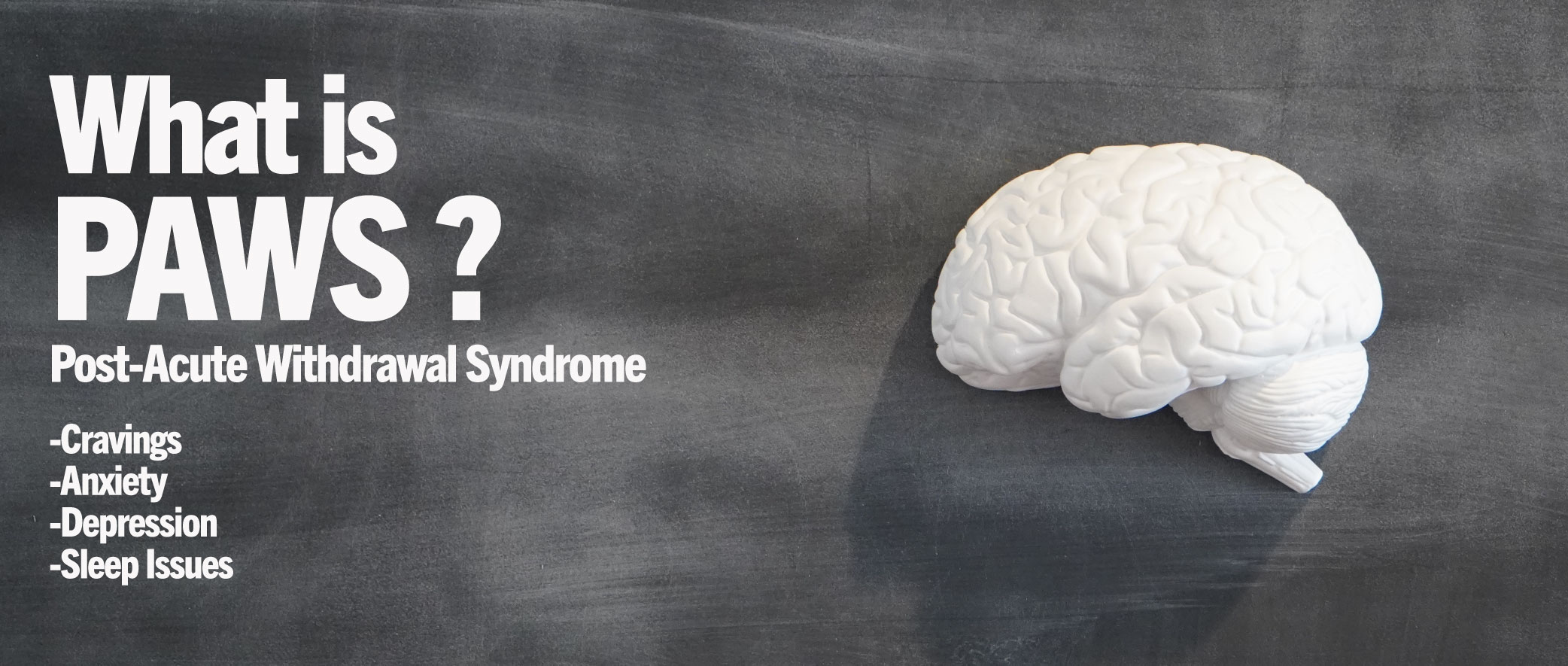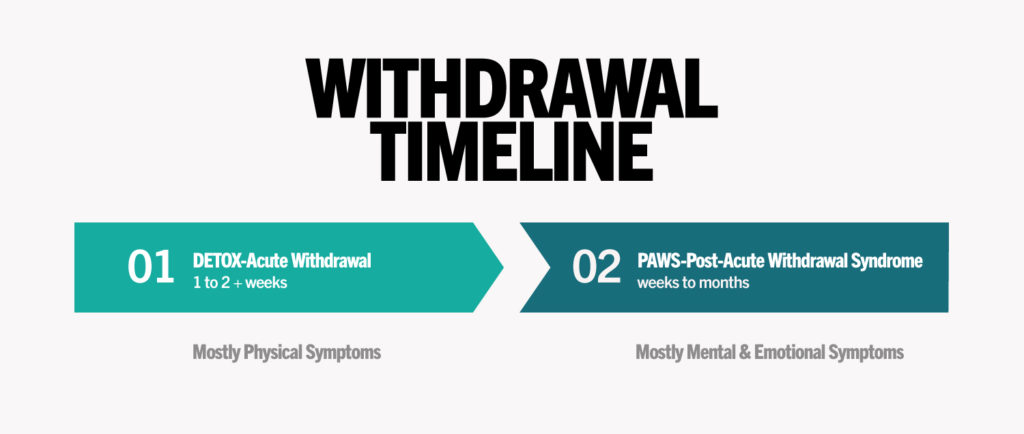
Post-Acute-Withdrawal Syndrome (PAWS) is a set of symptoms that can typically last for weeks or months during the early phases of addiction recovery. Depending on the extent of the addiction and drugs abused, PAWS can sometimes last a few years.
When a person with a substance use disorder (SUD) stops taking drugs, they go through two stages of withdrawal.
The first stage is the acute withdrawal, and during this phase, you will experience physical withdrawal symptoms. Also referred to as the detox phase detox, acute withdrawal typically lasts a few weeks. However, the length of detox will vary depending on the individual and the extent of drug abuse.
The second phase, post-acute withdrawal syndrome (PAWS), is a collection of psychological and mood-related symptoms that occur as the brain recovers from the effects of active addiction. PAWS can also be referred to as prolonged withdrawal syndrome, post-withdrawal syndrome, or protracted withdrawal syndrome. Because the symptoms of PAWS are similar to ones found in mood and anxiety disorders, it is important to know that PAWS is temporary. It may be uncomfortable, but it doesn’t mean that the symptoms are due to a mental health disorder.

Withdrawal symptoms are typically the opposite of the effects of the drugs abused.
Common Symptoms:
One of the more dangerous aspects of PAWS is that many people don’t know about it. There is a common belief that after detox, when all the drugs are out of your system, normal life will resume. This is not the case. Those who experience the re-occurring and prolonged discomfort of PAWS without understanding it can become demoralized, depressed, anxious, and prone to relapse.
The symptoms of PAWS can last three months or two years. It depends on the type of substance abused, the length of time it was abused, and the health of the person.
In general, PAWS lasts longer for someone who:
1. Spent several years using drugs.
2. Used drugs by snorting or injecting them.
3. Is older.
4. Has kidney or liver problems.
Early in recovery, the symptoms of PAWS will arrive in unexpected waves. You may wake up one morning feeling tired, run-down, and extremely irritable for no reason. Or find yourself suddenly at a loss of balance and coordination. They can appear and disappear by the day or even the hour.
Later in recovery, the symptoms become more cyclical in nature. They last for several days at a time before disappearing again for several weeks or months. As more time passes, symptoms will happen less often and fade more quickly.
In pre-addiction, when someone completes a task related to their survival (eating, sleeping, procreating, physical activity), the limbic system creates dopamine, a neurotransmitter that leads to feeling happy, satisfied, or even euphoric. It’s the brain’s way of motivating us to do what we need to survive — it feels good.
During active addiction, drugs and alcohol flood the brain with massive amounts of dopamine every time the person uses. Since the brain is an organ capable of learning, it makes two conclusions.
In recovery, when those drugs are withdrawn, it creates a huge dopamine shortage.
As a result, during PAWS, people will struggle with things that require dopamine.
For instance, dopamine helps maintain a “normal mood” baseline. Without this balancing agent, people experience drastic mood swings. The high end of the spectrum is anger or anxiety while the low end is dysphoria, depression, anhedonia.
PAWS happens while the brain heals post-addiction. It’s an uncomfortable process that must run its course, but there are many ways to speed up the recovery.
Consult a physician if symptoms become extreme or dangerous. For instance, suicidal thoughts.
Tree House Recovery for Men uses 8 scientifically-backed methods to help the brain regrow and recover after addiction. We believe it’s our job to help men recover by becoming their best self — mentally and physically. For more info, see our reviews and success rates.